WAR GRAVE
VICTOR C. O. MAYBURY (grave 17)
PILOT OFFICER
83 SQUADRON
ABOUT MY LIFE
Born: 1919
Died: 25th August 1941
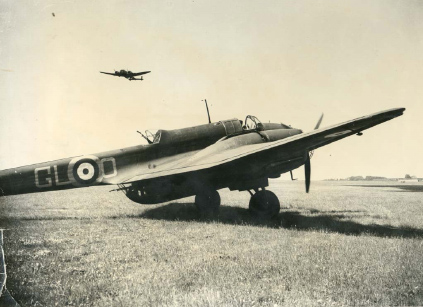
I was a Pilot Officer in the Royal Air Force Volunteer Reserve. I was the son of William and Emily Maybury, but nothing else is known about my life at this stage.
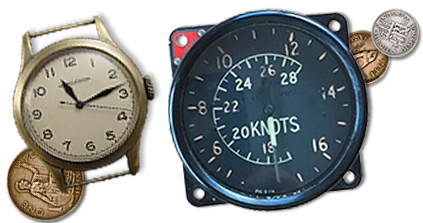
MY AIRCRAFT
The Hampden was a medium bomber with a crew of 4. Pilot, Navigator, Wireless Operator/gunner and a further gunner. Although it was a vast improvement on the biplanes 83 Squadron had been flying just before the war opened, in reality it was already obsolete. Early daylight raids had been a disaster, the bomber was too slow to evade German fighters and its guns were no match for the Germans either. The distinctive fuselage, designed to give the aircraft a sleek, aerodynamic profile, led to the Hampden earning its nickname of “The Flying suitcase”.
Crew: 4
Span: 21.09 m
Length: 16.32 m
Height: 4.37 m
Wing area: 63.90 m²
Empty weight: 5,344 kg
Loaded weight: 8,508 kg
Engine: 2 x Bristol Pegasus XVIII 9-cylinder radial engines
Engine power: 980hp each
Maximum speed: 410 km/h
Rate of climb: 5.00 m/s
Range normal: 1,095 km
4 or 6 x 7.7mm Vickers K machine guns (1 flexible, 1 nose, 1 or 2 dorsal, 1 or 2 ventral)
1,814kg of bombs/mines or 1 x 18in torpedo
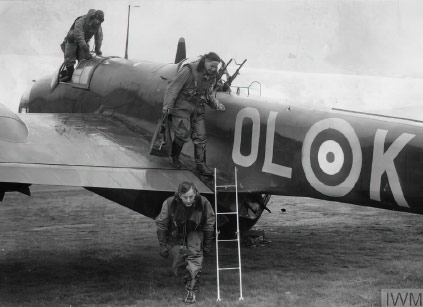
An 83 Squadron crew disembark from their Hampden.
MY ROLE
On this mission, I was the pilot. The Hampden had just one seat for a pilot and I would remain in this position throughout the mission.

MY SQUADRON
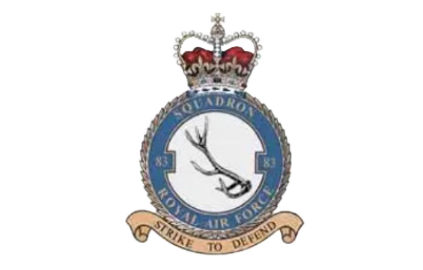
Motto: Strike to Defend
83 Squadron was formed at Montrose on 7th January 1917 as a night bomber squadron. Moving to France in March 1918, the squadron saw action on the western Front and took part in operations to counter the German’s Spring Offensive. Following the end of the war, the Squadron was disbanded on 31 December 1919.
With the threat of war once again looming over Europe, 83 squadron was reformed at RAF Turnhouse on 4th August 1936, flying the Hawker Hind biplane. In March 1938, the squadron re-equipped with Handley Page Hampdens at RAF Scampton.
In the summer of 1940, the Squadron received one of Scampton’s three Victoria Crosses due to the heroic actions of Flight Sergeant John Hannah in putting out the fire on a battle damaged Hampden.
In December 1941, the squadron re-equipped with the infamous Avro Manchester, but the poor reliability of this aircraft led to them quickly being re-equipped with the legendary Avro Lancaster, with which the squadron fought the rest of the war. In August 1942, the squadron became a pathfinder unit, leading large bomber formations to their targets and laying target indicator flares so they could be more accurately hit.
After the war, they flew Avro Lincolns and Avro Vulcans, before being disbanded in 1969.
THE ACCIDENT
Tonight would turn out to be a night of multiple tragedy for Scampton. In the space of just 25 minutes, 3 aircraft and 16 people would be killed within sight of home and safety. Our mission had been dangerous enough, with the main bomber force attacking Dusseldorf, we had been tasked with searchlight suppression in the Wesel area. Searchlights were much feared by bomber crews, as soon as you were detected by one searchlight, others immediately turned their attention on you too, we called this being coned by searchlights.
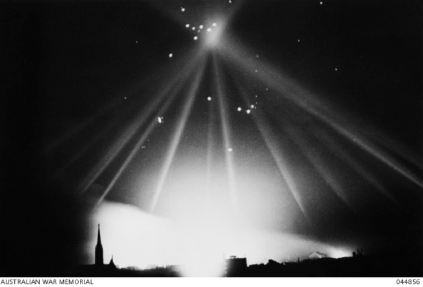
Once coned by searchlights, it was almost impossible to escape. Not only was the pilot blinded by the intense light, but also every anti-aircraft gunner in the area started shooting at you; it was a deadly combination.
In order to give the crews of main force a chance, our job was to attack these searchlights as soon as they illuminated. We were pretty successful too, not only did the searchlights loose their targets, but within 25 minutes all the searchlights had been turned off, to prevent becoming a victim to our bombs.
With the dangers of the mission far behind us, we landed Hampden AE223 at Scampton and taxied to our dispersal, came to a halt and put the brakes on. With the relief of surviving another dangerous mission palpable amongst the crew, we ran through the last of our shut-down checks.
Four of our ground crew were attending to the aircraft and one of their jobs was to inspect the bomb bay for any bombs that had failed to release, known as hang-ups in RAF parlance. To allow the ground crew to complete this check, we opened the bomb bay. Within an instant, 8 people were dead, the aircraft exploded killing all four crew and four ground crew.
The aircraft had indeed suffered a hang-up, but this was a particularly nasty one. To keep the bomb safe whilst in the aircraft, a piece of wire was attached between the fuse and the aircraft. In normal use, this wire would break when the bomb was released, arming the bomb to explode on the target. If the bomb failed to release, the wire wouldn’t snap and the ground crew could safely deal with it upon our return.
In this case, the bomb initially failed to release and stayed on the rack. At some point after we closed the bomb bay, the bomb finally released, snapping the wire and arming the bomb. The bomb rolled around in the bomb bay all the way back to Scampton, completely undetected by the crew. As soon as we opened the bomb bay, the bomb fell to the ground and exploded.
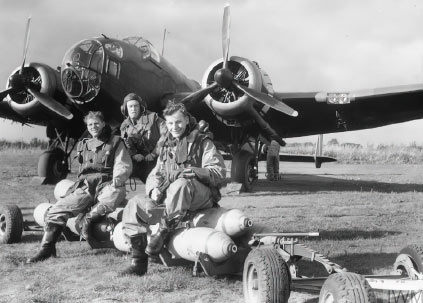
One of the ground crew killed was Cpl Inkpen, who, just 3 months earlier, had shot-down the German JU88 crew who lie buried nearby. As if this wasn’t tragedy enough, more was to come and in just 25 minutes, an equally devastating set of events was about to unfold.
CASUALTIES – 25TH AUGUST 1941
Plt Off Victor Charles Ormond Royd Maybury (Pilot) (Buried Scampton)
Plt Off Thomas George Matheson MacIntyre (Pilot) (Glasgow New Cemetery)
Sgt Edward W John Clarke (Wireless Operator/Air Gunner) (Woodgrange Park Cemetery East Ham – Joint Grave with his brother)
Sgt Ronald Scholes (Wireless Operator/Air Gunner) (Audenshaw Cemetery)
Ground Crew
Cpl William Inkpen (Basing (St Mary) New Churchyard Hampshire)
LAC Leonard Silvester Rayment (Camberwell New Cemetery & Crematorium)
AC1 William Ronald Stevenson (Stand (All Saints) Churchyard)
Colin Ogden (Stockport Cemetery & Crematorium)
Where Next
Visit Cpl Inkpen’s Grave at Basing (St Mary) New Churchyard, Hampshire, Old Basing, Basingstoke and Deane Borough, Hampshire, England.
ON THIS DAY IN WORLD WAR TWO – 25TH AUGUST 1941
In Tehran, an Anglo-Russian occupation begins.
In Ratsenburg, Germany Hitler holds talks with Mussolini. Hitler rails against Spain’s refusal to enter the war on their side.
